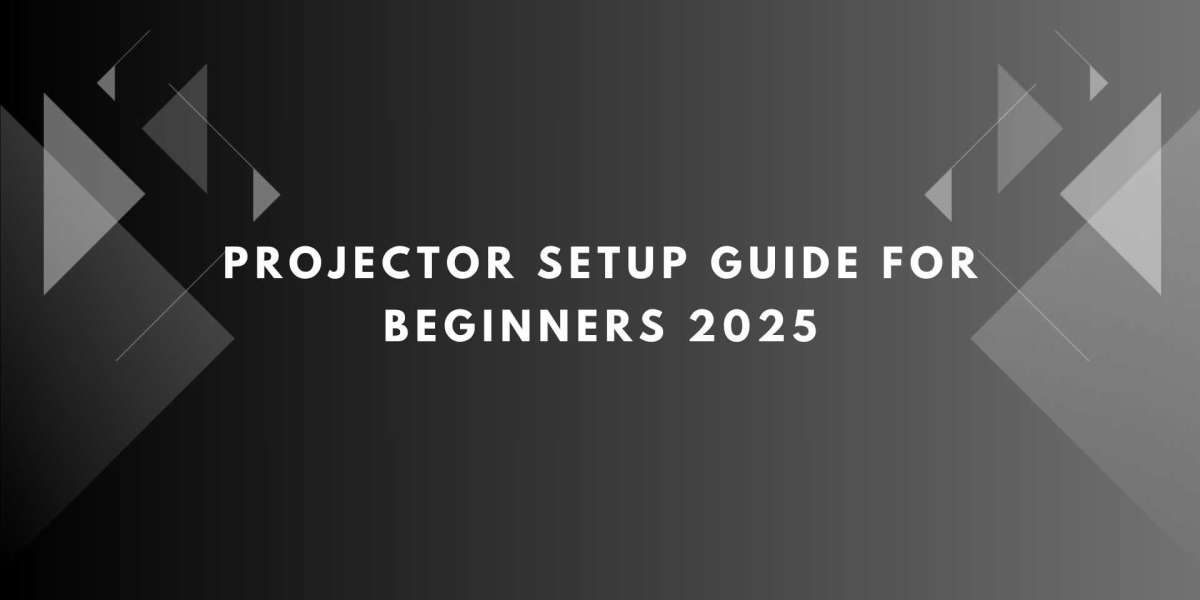The projector has evolved from a niche product for corporate presentations to a household staple for entertainment and learning. In 2025, projectors are more compact, smart-enabled, and capable of delivering high-resolution output in various environments. However, improper setup can lead to poor image quality, eye strain, and frustrating user experiences. This blog aims to guide first-time users through the essential steps to set up a projector the right way.
Step 1. Choose the Right Projector
Before you can set up a projector, you need to choose one that suits your space and purpose. Projectors vary based on brightness, resolution, throw distance, and connectivity. Some common types include:
Home Theater Projectors: Designed for dark rooms and optimized for movies.
Business Projectors: Bright enough to use in well-lit conference rooms.
Short Throw and Ultra Short Throw Projectors: Ideal for small rooms with limited space.
Portable Projectors: Lightweight and easy to move, often used for quick setups or travel.
For beginners, look for a projector with automatic keystone correction, built-in speakers, and wireless connectivity.
Step 2. Select the Right Location
Your setup will depend heavily on the location. Ask yourself the following:
Is it a dedicated space or a multi-use room?
Can the lights be dimmed?
Is there a white or lightly colored wall, or will you use a screen?
Mounting the projector on the ceiling or placing it on a stable table should be determined based on your room’s layout. Keep in mind that ambient light can wash out the image, so choose a location where you can control lighting.
Step 3. Understand Throw Distance and Screen Size
Throw distance is the distance between the projector lens and the screen. Each projector has a specific throw ratio that determines how large the image will be at a certain distance. For instance:
A standard throw projector typically requires 6 to 10 feet for a 100-inch screen.
A short throw projector can achieve the same image size from just 3 to 4 feet.
An ultra short throw projector can sit just inches from the wall.
Use the manufacturer’s throw distance calculator or a tool like XTEN-AV’s AV design platform to plan the perfect projector placement without guesswork.
Step 4. Choose or Install a Screen
While a blank wall can work in a pinch, a dedicated projector screen will significantly improve picture quality. Options include:
Fixed Frame Screens: Mounted on walls for a home theater feel.
Pull-Down Screens: Convenient for multi-purpose rooms.
Motorized Screens: Controlled via remote, ideal for modern setups.
Portable Screens: Great for outdoor or mobile use.
Ensure the screen size matches the projector’s capability and room dimensions. Matte white screens are a safe bet for most environments.
Step 5. Connect the Projector to Your Source
Modern projectors support various input types. The most common connection methods include:
HDMI: Standard for laptops, streaming devices, gaming consoles.
USB-C: Common on newer laptops and tablets.
Wi-Fi and Bluetooth: For wireless streaming and audio.
VGA: Older standard, mostly phased out by 2025.
Smart Apps: Built-in apps like Netflix, YouTube, or screen mirroring.
Make sure to select the correct input source from the projector’s menu once everything is connected.
Step 6. Adjust the Image
Once the projector is turned on, you may need to fine-tune the image. Key adjustments include:
Keystone Correction: Corrects image distortion if the projector is angled.
Zoom and Focus: Adjust to make the image sharp and fill the screen.
Lens Shift: Moves the lens vertically or horizontally without distortion.
Aspect Ratio: 16 by 9 is standard for movies and streaming.
Some modern projectors include auto-adjustment features using built-in cameras and sensors, making setup even easier.
Step 7. Optimize Audio
While many projectors come with built-in speakers, they are usually basic. For a better experience, connect external speakers or a soundbar using:
3.5mm Audio Jack
HDMI ARC or eARC
Bluetooth Connectivity
If you are setting up a projector in a large room, consider using a full AV receiver with surround sound speakers.
Step 8. Calibrate for Best Picture Quality
To get the most out of your projector, calibrate it based on your environment. Most projectors come with preset modes like Movie, Sports, or Presentation. You can also manually adjust:
Brightness
Contrast
Sharpness
Color Temperature
Ambient light sensors in newer projectors automatically adjust brightness based on room conditions, offering hassle-free optimization.
Step 9. Use Smart Features
In 2025, many projectors come with smart capabilities such as:
Voice Control using AI assistants.
Screen Mirroring from smartphones and laptops.
Cloud Storage Access for presentations or media.
Smart Home Integration with platforms like Google Home or Alexa.
These features add convenience and enhance the user experience, especially in hybrid work or education setups.
Step 10. Maintain Your Projector
Proper maintenance ensures a long lifespan. Here are a few tips:
Clean the Lens regularly with a microfiber cloth.
Keep Vents Clear to prevent overheating.
Check Lamp Hours if your projector uses a bulb. LED and laser models last longer.
Update Firmware to get new features or bug fixes.
Use a dust cover when the projector is not in use, especially if it is ceiling mounted.
Final Thoughts
Setting up a projector may seem technical at first, but with the right tools and a step-by-step approach, even beginners can create a professional-grade viewing or presentation environment. Whether you are using XTEN-AV’s platform to pre-design your setup or manually adjusting components, the key is planning and understanding your space.
Projectors have become more user-friendly in 2025, and the integration of smart technology and AV design software means you no longer need to be a technician to achieve great results. Follow this guide and enjoy your projector setup with confidence.


